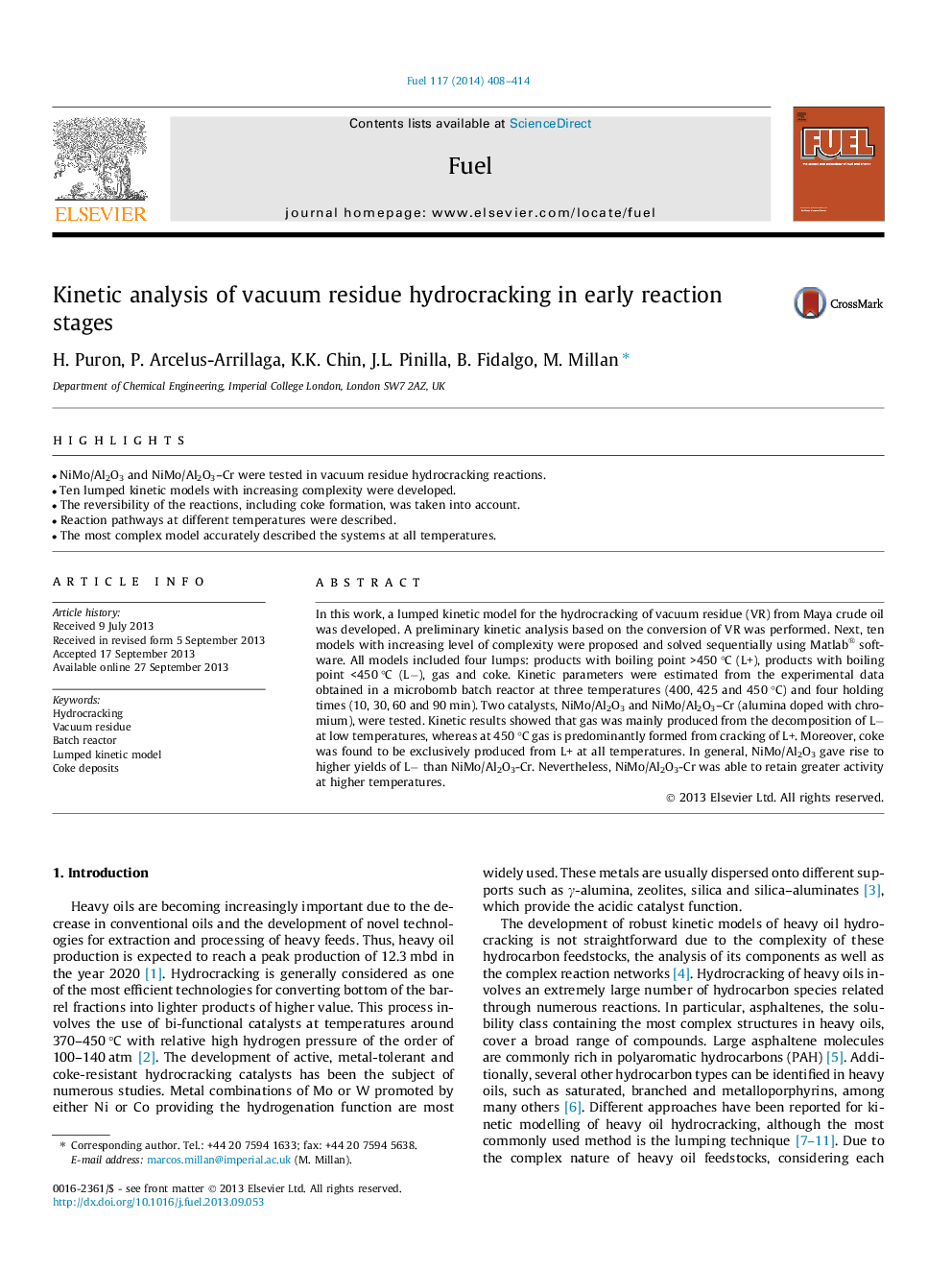| کد مقاله | کد نشریه | سال انتشار | مقاله انگلیسی | نسخه تمام متن |
|---|---|---|---|---|
| 10272011 | 461157 | 2014 | 7 صفحه PDF | دانلود رایگان |
عنوان انگلیسی مقاله ISI
Kinetic analysis of vacuum residue hydrocracking in early reaction stages
ترجمه فارسی عنوان
تجزیه سینتیکی هیدروکراکینگ باقی مانده خلاء در مراحل اولیه واکنش
دانلود مقاله + سفارش ترجمه
دانلود مقاله ISI انگلیسی
رایگان برای ایرانیان
کلمات کلیدی
هیدروکراکینگ، جایگزین خلاء، راکتور بچ مدل جنبشی تجمعی ذخایر کک،
موضوعات مرتبط
مهندسی و علوم پایه
مهندسی شیمی
مهندسی شیمی (عمومی)
چکیده انگلیسی
In this work, a lumped kinetic model for the hydrocracking of vacuum residue (VR) from Maya crude oil was developed. A preliminary kinetic analysis based on the conversion of VR was performed. Next, ten models with increasing level of complexity were proposed and solved sequentially using Matlab® software. All models included four lumps: products with boiling point >450 °C (L+), products with boiling point <450 °C (Lâ), gas and coke. Kinetic parameters were estimated from the experimental data obtained in a microbomb batch reactor at three temperatures (400, 425 and 450 °C) and four holding times (10, 30, 60 and 90 min). Two catalysts, NiMo/Al2O3 and NiMo/Al2O3-Cr (alumina doped with chromium), were tested. Kinetic results showed that gas was mainly produced from the decomposition of Lâ at low temperatures, whereas at 450 °C gas is predominantly formed from cracking of L+. Moreover, coke was found to be exclusively produced from L+ at all temperatures. In general, NiMo/Al2O3 gave rise to higher yields of Lâ than NiMo/Al2O3-Cr. Nevertheless, NiMo/Al2O3-Cr was able to retain greater activity at higher temperatures.
ناشر
Database: Elsevier - ScienceDirect (ساینس دایرکت)
Journal: Fuel - Volume 117, Part A, 30 January 2014, Pages 408-414
Journal: Fuel - Volume 117, Part A, 30 January 2014, Pages 408-414
نویسندگان
H. Puron, P. Arcelus-Arrillaga, K.K. Chin, J.L. Pinilla, B. Fidalgo, M. Millan,
